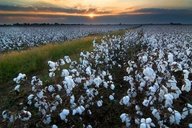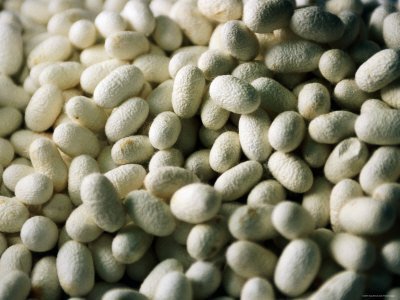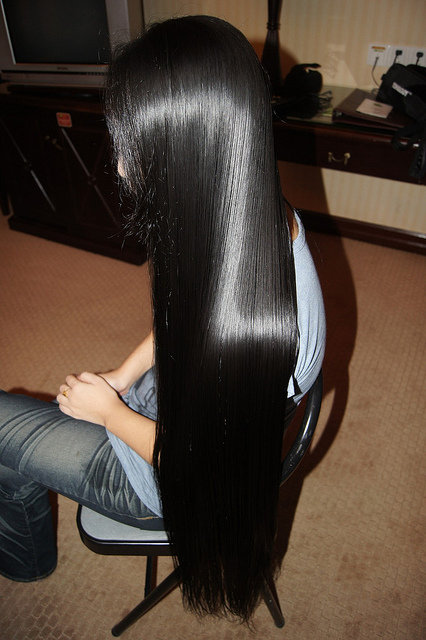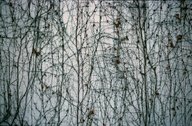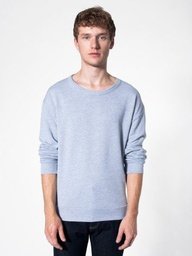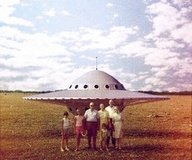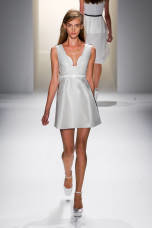Introduction
The product under analysis is a Zara tulip Dress; it is red, pleated and has a jewelled collar. The garment is available in size XS and costs approximately £40. The company sells it in most retail outlets around the world. Clients can also get it from the internet through the firm’s website or e-bay.
An analysis of the production process of the commodity illuminates the intricacies of innovation and creativity within the fashion industry.
Main results and findings
Retailer Background and analysis
Zara is a public company headquartered in Spain. Its founder –Amancio Ortego –has presided over the rapid growth of a small business into a multinational conglomerate known as Inditex. The latter organization is among the top three fashion companies of the world.
It started in 1975, and by 1985 had made $ 0.086 billion in sales. This increased to $0.8 billion and $8.2 billion in 1995 and 2005 billion respectively.
Currently, the organisation has over sixty thousand employees and over 4000 stores around the world (Ferdows et. al. 2010). For a graphic explanation of the financials in the company, refer to the appendix.
Brand/retailer positioning
Zara is a clothing retailer that created and perfected the fast fashion model. Unlike other clothing retailers who persuade clients to like and buy their designs, Zara does it in reverse. It prefers to study consumer demand in order to use it as a basis for its designs.
The company’s approach has been so successful that other organizations are imitating components of their model. When a product becomes available in Zara’s retail outlets, it only stays there for a few days. This creates scarcity in the minds of consumers who must purchase the item or miss it altogether.
The firm has also positioned itself as one that does not advertise. It relies on impressive in-store displays, low prices and central locations in fashion districts. Rarely does this organisation hire well-known designers or use complicated technologies for production.
As such, competitors must struggle to keep up with their prices. The corporation sells affordable and trendy garments. Collections are not elaborate as the company focuses on selling all items within two weeks (Crofton & Dopico 2007).
Consumer focus
This organisation prioritises consumer needs over and above any other factor of production. Zara has chosen to integrate the production processes vertically in order to accommodate customer needs. The length, size, colour, fabric and methods of construction represent 2013 spring trends.
The company’s employees have training on how to get information from buyers about how they feel about a certain product. For instance, some buyers will state that they do not like straight collars or they prefer zippers on heavy garments.
Employees will note this information; convey it to store managers who then transfer the information to their headquarters in Spain daily (Pearson 2009).
Customers’ reactions determine how the company carries out its business. The organisation realised that fashion clients want a firm that responds to their needs in the fastest way possible. Price was less essential to their buyers than flexibility.
Description of the product
Seamstresses made the garment from polyester fabric, and it is red in colour. The dress has a round collar that covers most of the chest area. It also has embroidered jewellery that blends perfectly with the colour of the outfit. At the waistline, the dress has modest pleats that give it the shape of a tulip.
The garment spreads out into an A-shape at the bottom and its fabric is linen. Since it is available in a small size, then ladies with small frames are well-suited to the piece. Furthermore, those with pale skin would look good in the outfit.
The item is a few inches above the knees thus giving it a youthful and flirtatious feel. It is something that can be worn to a cocktail party, wedding, outdoor event or any other daytime festivity. However, because of the boldness of the colour, one should only select the item if one wants to stand out from the crowd.
Mood board influences fabric
Following the need to keep things formal and subtle, the designers chose fabric that went with such a design. The collection consisted of a lot of woollen items as many of them match with grey. There was a healthy dose of polyester in the collection as well as linen and cotton.
A few dashes of silk and leather were prevalent; for inspiration one can use furniture and hair respectively. However, because the latter are salient fabrics, then it was essential to make the products in black and other neutral items. The red tulip dress was mostly linen, which resembles the balls shown below.
Mood board colour
In this design, the concerned team members drew inspiration from nature. A grey cloud would be the ideal example. This would be accentuated through the presence of metallic machines as seen through the craft in the Mood board below.
The woods would also capture the colour essence of the collection if sparsely populated by vegetation. Black and red dresses in the collection stem from red tulips and the night sky respectively.
The design process – from concept to consumer
Research
Designers of the red, tulip dress sought information from a myriad of sources. First, they analysed their current customers’ tastes through in-store purchases. Sales information of items sold by colour and size gave the designers information on consumer preferences.
Store managers furnished these designers with the information. The other sources of inspiration for the creation were magazines, celebrity trends, runways shows in fashion capitals as well as trends in social and recreational centres like restaurants (Crofton & Dopico 2007).
Colour Palettes
The above combination represents the inspiration for the entire collection. The palette contains saturated neutrals. Since the combination consists of three versions of grey, it is not surprising that a number of the dresses in the collection belonged to this category.
The first was ribbon red while the last is ultramarine green. Bright white and blue (sodalite) also form part of this colour scheme.
The team drew inspiration from flags as most of them contain these kinds of colours. As it can be seen, the colours above are quite subtle. International designers have moved away from bright colours and are using more neutrals this year.
Yarn and fabric fairs
Workers thread fabrics for this company from scratch in Spanish factories. Yard fairs are, therefore, crucial to the organisation because they assist in the development and enhancement of existing colour and fabric palettes.
The organisation’s representatives often attend fairs in production capitals of the world so as to gain knowledge on new production techniques, as well.
The red dress was not pure linen as it contains small percentages of synthetic yarn. It would not have been possible for the organisation to develop this hybrid without input from industry experts.
Presentation of trends – mood boards
This season-Spring 2013- short dresses are in and most designers are experimenting with short lengths. The trend explains why most of the garments in their collection were above the knees. Additionally, grey is the go-to colour as the public is moving away from the bold colours of 2012.
Most of the outfits in Zara’s collection reflected this pattern. Stripes are also in; many designers have found new ways of experimenting with the patterns. The striped green and white dress in the company’s collection epitomised this style. Leather is here to stay thus proving that Zara is well in tune with consumers’ tastes.
Garment design
The design of the garment occurred through creative teams at Inditex. Unlike other fashion retailers who focus on groups of designers, Zara combines several professionals under one team. For instance, designers will work alongside product development experts as well as raw material specialists (Pearson 2009).
All of them are keenly aware of the time constraints, so they avoid making too many product alterations. While making the red, tulip dress, the creative team also worked on a number of other samples that belonged to the collection.
They used information from the earlier mentioned research sources (in-store information, magazines etc) to make the dress. The group consisted of young designers who did not get penalised for making poor decisions. However, they tried as much as possible to make the products quickly.
Sampling
Several fashion retailers in the fashion retailers often decide on certain fabrics and then look for those fabrics before making their products. However, this pattern is not applicable to Zara. The organisation realises that it has a lot to lose if it waits for the lengthy process of fabric formation (Ferdows et. al. 2010).
Therefore, it makes it garments using available fabrics. When creating the red dress, Zara selected fabrics that were already there. The sampling process proceeded on the basis of available fabric selections so as to save on time.
Construction
Machines did most construction of the garment. There were a number of similar red, tulip dresses in the firm’s premises. The company trimmed and assembled them using automated processes.
Machinists were responsible only for one aspect of the dress; for instance, some of them made collars while others focused on hems, shoulders and pleats. In essence, the construction of the dress followed the following process.
After the design, workers assembled sample fabrics. They made trims, which came after pattern making. Cutters then worked on the garment and machinists handled the assembly of the dress.
Large scale construction of the garment meant that most of the processes had to be done through the use machines (Crofton & Dopico 2007).
Manufacture supply chain and critical path
As mentioned earlier, Zara’s supply chain is vertically integrated thus implying that employees made the red Tulip dress within its facilities. The diagram illustrates the critical path for the manufacturing process.

Sometimes the company chooses to outsource non value adding activities like sewing. The company handled all the above processes aside from sewing. The firm’s manufacturers are in Spain, Portugal and Turkey.
However, the primary production site is Spain. For the red dress, the fabric probably came from Italy, Germany, Turkey, India or China. Employees in the firm’s subsidiary then dyed, printed and marked the fabric after obtaining the raw materials.
These activities precede the cutting process in which a seamstress follows designers’ patterns concerning the garment. In certain circumstances, Zara may contract its sewing process to cooperatives in Portugal. If this happened to the garment, then the product was in the hands of third parties for a short period.
Thereafter, the garment came back to Zara’s intermediaries where it carried out quality checks, packaging as well as finishing. The final aspect is distribution and logistics control (Crofton & Dopico 2007).
Range building – what is its function within the range
The red tulip dress is part of a collection of garments for spring 2013. The collection includes a series of other dresses in different colours and designs. Most of the items in the collection are not as brightly-coloured as the red dress. This year, they range from white and green, grey, and black.
In fact, the garment is the only one that pops out in the collection. Most dresses in the collection are subtle. Furthermore, the accessories at the collar are also unique because most items in the collection make use of conventional accessories like buttons.
In this regard, this item was the classiest piece in the collection. The designers wanted to respond to a unique need among its clientele for a dominant fashion item.
Sample collection
When creating the sample collection, neutral colours, like grey and black, inspired the company’s designers. As seen above, the red garment was the exception rather than the rule.
Machinists made one garment from the beginning to the end. Initially, the team rejected some of the samples and had to refine them. For instance, the third last dress had grey sleeves. It was after taking certain suggestions that the product was altered to its present status.
Delivery
The time it takes for Zara to procure material for fabric and deliver a product to a retail outlet is roughly five weeks. Competitors’ lead times pale in comparison to Zara’s because most of them take half a year to finish a garment.
After completing the dress, the company shipped it to its respective retail outlets in the UK within 24 hours. Since the latter is in the European continent but not in Spain, the company had to use air transport to meet the 24-hour window.
Zara entered into partnerships with Air France and Emirates Airlines because it values flexibility and speed during delivery. The company shipped the dress to the Middle East and certain parts of Europe through this arrangement.
The same platform shipped back raw materials from Asia. Zara is willing to do whatever it takes to reduce delivery times (Cecilie 2008).
Visual Merchandising in-store
Most Zara stores are famous for their uniformity and uniqueness. They are white, spacious and modern. Mirrors cover the walls, and they are quite attractive. Since the Tulip dress is one of the latest fashions, sales assistants hanged it on store racks. The organisation selected prime locations in stores for the dress.
They also put it directly under a light to as to illuminate it and attract it to its clients. This dress can be found in similar locations around fashion capitals around the world. Therefore, international visitors could learn about the dress on the internet but find it on display in Milan or Paris.
Even in-store designs reflect these patterns. A team of designers normally decide on window displays as well as store layouts. Therefore, the red, tulip dress was a central piece of the collection, so placement in the middle of the store was appropriate.
The designers tried out this display from their headquarters in Spain and then photographed it. They then sent the photos to all fashion capitals with Zara’s retail outlets.
Monitor and response to sales
One of the most dramatic ways in which Zara has curved a niche for itself as a top fashion retailer is its fast response to sales figures. About 40% of the products sold in the company represent costly new designs. Other products reflect trends in cuts, fabrics and colours.
The red Tulip dress happens to fall in the latter category. An analysis of sales figures within the company’s stores led to the design.
As mentioned earlier, Zara keeps its costs down by avoiding massive investments in technology. To obtain sales information from retail stores, the company uses personal digital assistants for its store managers. Store managers must rely on sales rankings to reorder existing garments (Ferdows et. al. 2010).
Prior to the development of the red Tulip garment, sales managers at the headquarters monitored the performance of similar dresses, colours and sizes on their basic computer systems.
They immediately conveyed the information to designers in the same building so as to facilitate new designs, including the red dress.
After the placement of the outfit in retail outlets, the organisation also used similar methods to convey information concerning its performance in order to use it for new designs.
Since clothes only stay in Zara’s retail outlets for a short time, then sales figures on the performance of the dress do not contribute to the continued display of the same piece. Designers use them to make similar items instead.
Factors affecting the design of the dress
The most significant factor affecting the design of the dress is the need to keep inventories fresh. This explains why employees designed the product within a relatively short time. Zara considers geographical preference, as well. Persons in Brazil prefer bolder colours to those in a place like Paris.
However, when trends go global, they do so simultaneously in almost all parts of the world. Cost cutting is also another factor that affects the design of the garment as few adjustments imply low costs. Consumer needs are a critical parameter in dress design, and so is availability of fabrics.
The organisation considers the length of time that a trend has been in season in order to know the colour, patterns and fabric that is most preferable (Pearson 2009).
Media coverage and impact
No advertisements take place at Zara. It does not even employ public relations tactics or celebrity endorsements to push products. When launching new products, the company will place basic announcements on local newspapers. The organisation’s founder and chairman are all extremely private individuals.
Therefore, media stories dwell on the organisation’s successful production, distribution, merchandising or logistical strategies. The media covers Zara’s stories when the company delivers impressive results. As such, customers have come to perceive it as a credible retailer that delivers on its promises.
Conversely, many fashion magazines and newspapers have fashion analysts and commentators. A number of them have criticised Zara for imitating top designers. These comments have hurt the company’s brand to a small extent (Cecilie 2008).
Conclusion
Plenty of lessons can be learnt from the production process of the red tulip dress. First, fashion organisations must have a clear vision of their brand. They should stick to this strategy even during international expansion as it is a source of differentiation.
Zara’s production process is highly efficient because it has streamlined communication processes between different members of the supply chain. Sales personnel, store managers, designers, suppliers and specialists all exchange information seamlessly.
Furthermore, the company prioritises consumer needs over any other issues in the business. Its leaders were not afraid to try something different in production. Instead of outsourcing manufacture, they brought it closer to consumers.
Additionally, instead of stocking various trends, the company only sold small collections so as to create scarcity. Fashion companies must be willing to go against the tide in order to become industry leaders.
This organisation used the just-in-time model of the automobile industry and vertically integrated production to create its competitive advantage. Such bold decisions are what make the firm an example for other fashion retailers to follow.
References
Cecilie, R 2008, ‘Pace-Setting Zara Seeks more speed to fight its rising cheap-chic rivals’, The Wall Street Journal, 10 September, p. 15.
Crofton, S & Dopico, L 2007, ‘Zara-Inditex and the growth of fast fashion’, Economic and Business History, vol. 25 no.3, pp.41-54.
Ferdows, K, Lewis, M & Machuca, J 2010,‘Rapid fire fulfilment’, Harvard Business Review, vol. 82 no. 11, pp. 59.
Pearson, A 2009, The story of Zara – The speeding bullet. Web.
